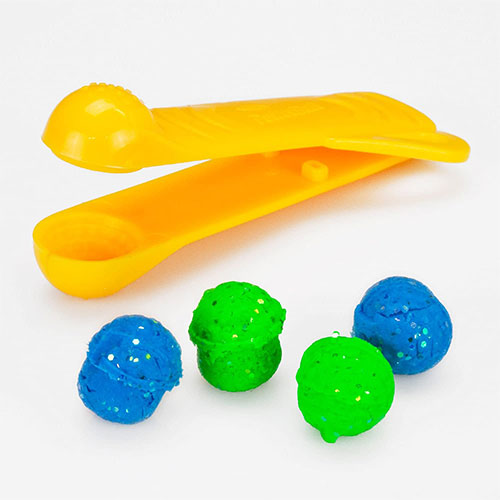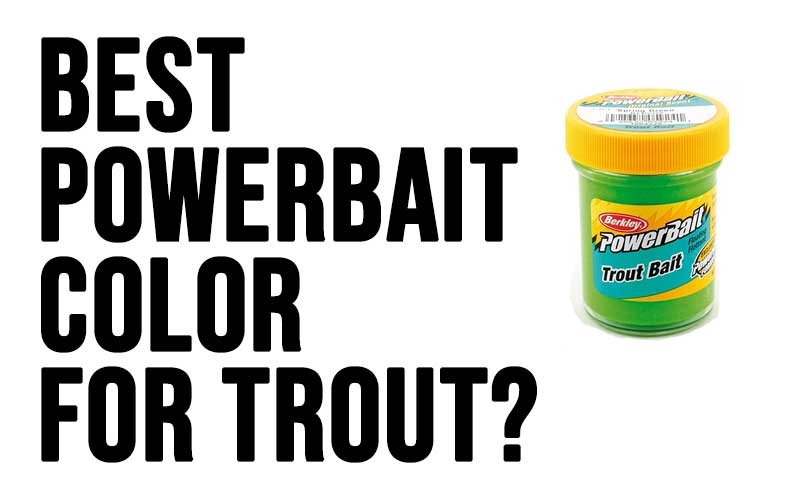It seems like there are an infinite amount of Powerbait and Gulp options for trout fishing. It can be really hard to determine what colors are going to work best for you on the water. Here are some of the top picks that I have had success with in the past.
The best power bait colors for trout are colors that are either bright or represent natural forage. This includes colors such as pink, red, orange, chartreuse, and natural/tan-colored baits. These colors usually contain a scent that will assist with their attraction power. All of these facts combined make using Powerbait for Trout an excellent fish-catching tactic.
Our Top Powerbait Colors for Trout
1) Chartreuse
I made this my first choice simply because I have used chartreuse baits and lures with tremendous success in fishing for many different species. I believe the highly visual yellowish color makes it easier to see in the water. Usually, I always have a bottle of chartreuse power bait with me if I plan on going trout fishing.
2) Orange / Red
These two are combined because I typically only carry one or the other when I am fishing. Red and orange are excellent choices because not only are they bright and highly contrasting colors, but Trout and Salmon spawn typically have a reddish-orange color to it. When the power bait is rolled into a ball shape, it can represent the eggs a female lays, which are a natural food source for trout in many different areas.
3) Pink
Pink power bait is also a great color because of how bright it is, and how close it is on the color wheel to orange and red. In addition to being very bright and highly contrasting, different salmonid species have to spawn that resemble the pink color. Pink is also a fan favorite in many steelhead and Great Lakes brown trout fisheries.
4) Hatchery Pellet
This color is an excellent choice for fisheries with an abundance of stocked trout. Many hatchery-raised trout are raised on “pellets” of food to help them grow quicker. These brown morsels of protein are all they’ve ever known to eat, which is why using this color (and shaping it into a ball) is an excellent choice for targeting trout.
5) Marshmallow White
The marshmallow white color may seem unusual, but the bright white color can really stand out in the water. Combined with a good bait scent, this makes for an attractive and easy-to-see bait profile in the water. Marshmallows are actually a slept-on bait for trout as well, they’re not just for smores and marshmallow guns. I wrote about it in a blog about secret trout baits.
The Powerbait Mold
There is one accessory that makes fishing with trout Power bait a lot easier. This handy tool from Berkley helps you form you’re power bait into a ball shaped lump, which you can then transfer onto your hook. Although it might seem unnecessary, I find it useful for three reasons.

- The small pellets are compressed under pressure and tend to stay on the hook longer than rolling a small piece of Power bait between your fingers.
- The tool allows you to keep your fingers out of the smelly power bait, which is nice for keeping your hands clean, if you’re into that sort of thing.
- Small pellets represent a similar shape to trout eggs and to hatchery pellet food, which are two common sources of food for stocked and naturally reproducing fish respectively.
In case none of the above-mentioned colors tickle your fancy, I’ve included a list of all the Berkley Powerbait Trout Bait for you to look at.
Powerbait Color Chart
How to Trout Fish with Powerbait
Now that you’ve got a couple of good colors in your tackle box, it’s time to figure out how to present the bait. The power bait is designed to be floating by nature, to allow for maximum scent dispersion. This also makes it more versatile. Lets look at two of the most common ways to fish with powerbait for trout.
Slip Bobber Rig
This is my personal favorite way to fish with power bait. Most stocked trout lakes and ponds tend to be deeper to keep water temperatures and oxygen levels higher for the trout. This means that using a slip bobber as opposed to a clip-on bobber is the preferred method.
I like to utilize a very small jig, (1/16th oz). and place a small ball of power bait on the hook. Four to six inches above that, I’ll place a decently sized split shot that will allow my bait to get down into the strike zone quickly. The slip bobber setup itself consists of a bobber stop, a small bead to prevent the bobber stop from getting stuck in the bobber, and of course the bobber.
I like to use the smallest bobber I can comfortably get away with. This makes it a lot easier to notice the sensitive bites, but also creates less of a disturbance when hitting the water.
Bottom Rig
This setup is more useful when fishing river systems I have found. Although using a slip bobber in deeper holes on rivers and streams can be effective, the shallower runs that oftentimes hold summer fish can be hard to fish with a slip bobber.
For this setup, start off with a very small hook (red preferably, I’m a big believer in the red hook fad). Something like a size 2, 4, or even 6 Eagle Claw Aberdeen hook is a good place to start.
Next, place a good-sized split shot roughly 8 inches above that. The size of the split shot does make a difference. Too light, and your bait won’t reach the bottom “strike zone” where trout are lurking. Too heavy and you’re bait might not get a natural float downstream. The key is to get a split shot that bounces along the bottom with the current freely but also keeps your bait down.





